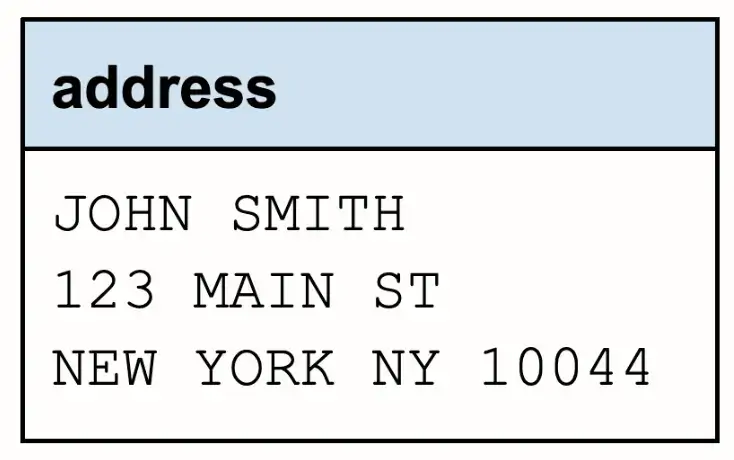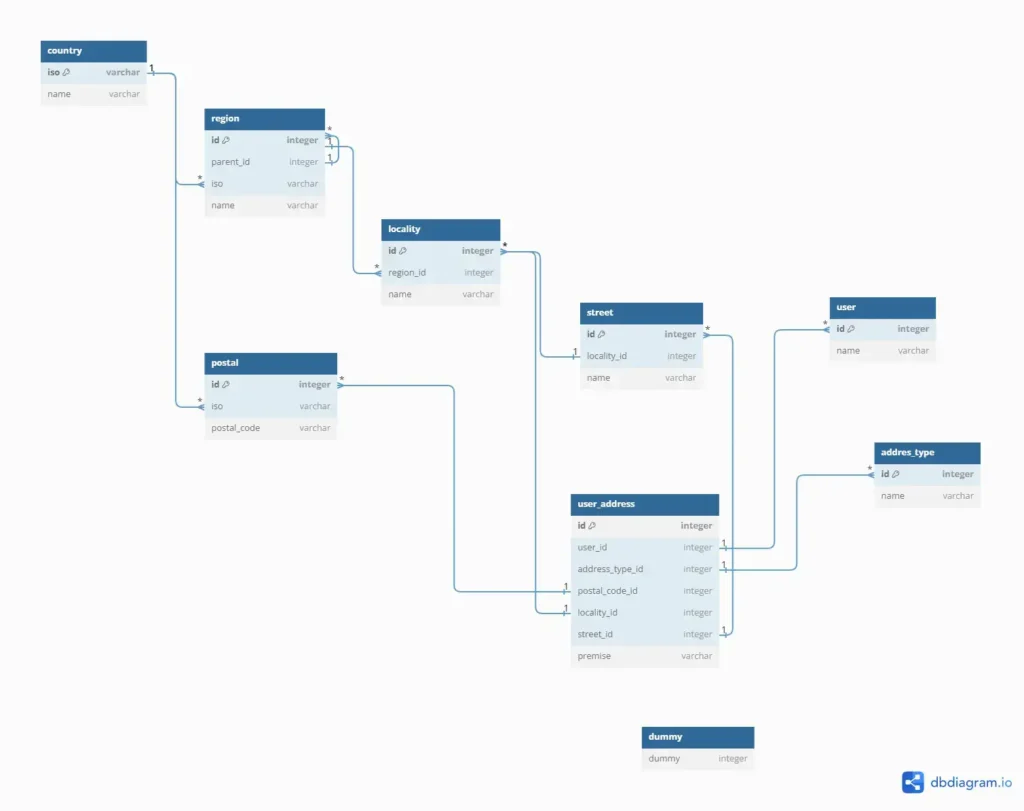Introduction
Storing addresses in a database is a common task for many businesses and entities that deal with large amounts of data. Whether for mailing, billing, shipping, or marketing purposes, having a reliable and efficient way to store and access address data is crucial for delivering quality services and products to customers and stakeholders.
However, storing addresses is not as simple as it may seem. Different countries and regions have different formats and standards for postal addresses, and some international addresses may not even fit into a predefined schema. Moreover, storing addresses also involves complying with legal and ethical requirements, such as data protection, privacy, and consent.
How can you master storing addresses in your database and ensure compliance with the best practices? In this blog post, we will explore some of the challenges and solutions for storing address data.
We will cover the following topics:
- Adopting a structured approach to address data
- Address storage and compliance: best practices
By the end of this post, you will have a better understanding of how to store addresses in your database and how to avoid common pitfalls and errors. So, let’s get started!
Adopting a Structured Approach to Address Data
The Importance of Normalization in Address Storage
One of the key steps to storing address data in a database is to normalize it. Normalization is the process of checking and correcting address records to a standard format, according to an authoritative database (such as USPS in the United States). It involves checking for spelling, formatting, and abbreviation errors and correcting addresses to a normalized format.
Normalization has several benefits for address storage, such as:
- It reduces data redundancy and inconsistency, leading to errors and inefficiencies
- It improves data quality and accuracy, enhancing customer satisfaction and trust
- It facilitates data querying and analysis, providing valuable insights and opportunities.
💡 For over 15 years, we have created the most comprehensive worldwide zip code database. Our location data is updated weekly, relying on more than 1,500 sources. Browse GeoPostcodes datasets and download a free sample here.
Advantages of building an Address Normalization System
To normalize international address data, you can build your system. This has several advantages:
Customization: Building your system allows you to customize the normalization process to meet your needs. You can tailor the system to handle unique address formats, special characters, or other requirements that off-the-shelf solutions may not support.
Control: You have full control over the normalization process, including data processing, storage, and updates. This can be particularly important if you have strict data privacy or security requirements.
Integration: Building your system allows you to integrate address normalization directly into your existing workflows and systems. This can help streamline processes and improve efficiency.
Scalability: You can scale your normalization system to handle large volumes of address data or accommodate future growth.
When building your address normalization or address validation system, a data vendor like GeoPostcodes can provide a high-quality address database that you can use as a reference to ensure the accuracy of your normalization system.
We offer global coverage that is particularly useful if you need to normalize addresses from different countries or regions. Our support will help you get started with data and APIs.
Database Schema Design for Address Information
Another important aspect of storing address data in a database is to design an optimized schema for the address tables. A schema is a blueprint of how the data is organized and related within the database. A well-designed schema can improve the performance, scalability, and maintainability of the database.
Some of the considerations for designing a schema for address information are:
- Select the suitable data types, which will typically be characters. However, don’t restrict the encoding to Latin characters alone. Opt for Unicode if you plan to accommodate addresses from around the globe
- Decouple the individual or business entity from the address, considering that multiple addresses may exist (such as residential, workplace, or shipping addresses). Additionally, maintaining a history of these addresses is also possible
- Consider the trade-offs between normalization and denormalization, depending on the size and complexity of the data and the frequency and type of queries
- Don’t confine yourself to the knowledge of your own country, as the diversity of address formats across the globe might surprise you, even within a country. Not all countries use postal codes, and even when they do, they often go by different names.
For example, ‘ZIP code’ is a term specific to the United States. Zip codes have been developed by USPS (United States Postal Service)
- Look at address formats here, and see the references section below.
Normalization levels
There isn’t a singular method for storing addresses in a database; it often depends on the specific use case and the scope of coverage. It’s frequently a balancing act between normalization and generalization.
The simplest way to store an address is a multiline string as the user types it. Everything is in the hands of the user, but you may not be able to verify anything.

The next step would be to separate fields: the username and identify the country (iso 3166 code):

A significant component of an address in numerous countries is the postal code. If circumstances allow you to request the user to fill out a form, you can propose localities based on the postal code. This postal code then enables you to verify the administrative region and the street.
You can end up with an address that is split into several components:
- country: 2 characters ISO code
- administrative_area: for state, province, region level
- sub_administrative_area: county, district
- locality: town, city…
- dependent_locality: or post town, mainly for the United Kingdom
- postal_code: warning, some countries have characters in it, not only numbers
- PO_Box: in some cases, the address might not be a street delivery address
- street: thoroughfare, street address
- premise: street number, apartment. It might also contain letters.
- sub_premise: floor, etc

By using a set of reference tables, you can store only foreign keys to those tables:

Address Storage and Compliance: Best Practices
Navigating Privacy Laws and Regulations
Storing addresses in a database involves complying with various data protection and privacy laws and regulations that apply to the organization and the data subjects. These laws and regulations aim to protect the rights and interests of individuals whose personal information, such as their address, is collected, processed, and stored by organizations.
They also impose obligations and responsibilities on organizations to ensure that they handle address data in a lawful, fair, and transparent manner.
Some of the most prominent data protection and privacy laws and regulations that affect address storage are:
- The General Data Protection Regulation (GDPR): The GDPR is a comprehensive and harmonized data protection law that applies to the European Union (EU) and the European Economic Area (EEA).
It grants data subjects various rights, such as the right to access, rectify, erase, and restrict the processing of their personal data.
It also requires organizations to obtain valid consent from data subjects before collecting and processing their personal data, unless there is another legal basis for doing so.
The GDPR also sets strict rules for data transfers outside the EU/EEA, requiring adequate levels of data protection in the destination country or region.
- The California Consumer Privacy Act (CCPA): The CCPA is a comprehensive data privacy law that applies to California residents and businesses that collect, sell, or share their personal information.
It grants data subjects various rights, such as the right to know, access, delete, and opt out of the sale of their personal information.
It also requires organizations to provide clear and conspicuous notice to data subjects about their data collection and sharing practices and to implement reasonable security measures to protect their personal information.
- The Health Insurance Portability and Accountability Act (HIPAA): The HIPAA is a federal law that applies to health care providers, health plans, health care clearinghouses, and their business associates that handle protected health information (PHI) of individuals in the United States.
It establishes standards for the privacy and security of PHI and grants data subjects various rights, such as the right to access, amend, and receive an accounting of disclosures of their PHI.
It also requires organizations to obtain authorization from data subjects before using or disclosing their PHI for purposes other than treatment, payment, or healthcare operations, unless there is another legal basis.
Depending on the nature and scope of the organization and the address data, other data protection and privacy laws and regulations may also apply, such as the Gramm-Leach-Bliley Act (GLBA), the Fair Credit Reporting Act (FCRA), the Children’s Online Privacy Protection Act (COPPA), and various state and sector-specific laws.
Organizations should conduct a thorough assessment of their data protection and privacy obligations and ensure that they comply with them when storing address data.
Secure Storage and Protection Against Data Breaches
Storing addresses in a database also involves implementing appropriate security measures to protect address data against unauthorized access and breaches. Data breaches can result in significant financial, reputational, and legal damages for the organization and the data subjects. They can also expose the organization to regulatory fines, penalties, civil lawsuits, and claims.
Some of the security measures that can help prevent and mitigate data breaches are:
- Data encryption. The process of transforming data into an unreadable format using a secret key. It can protect address data from being accessed or modified by unauthorized parties, even if they manage to breach the database.
Data encryption can be applied at different levels, such as disk, file, or database encryption. Data encryption can also be performed at different stages, such as data at rest, data in transit, or data in use.
- Data backup. The process of creating and maintaining copies of data in a separate location. It can protect address data from being lost or corrupted due to accidental or malicious events, such as hardware failure, human error, ransomware, or natural disasters.
Data backup can be performed using various methods, such as full, incremental, or differential backup. Data backup can also be performed using various media, such as tapes, disks, or cloud storage.
- Data access control. The process of granting or denying access to data based on predefined rules and policies. It can protect address data from being accessed or modified by unauthorized parties, such as hackers, insiders, or third parties.
Data access control can be implemented using various mechanisms, such as passwords, biometrics, tokens, or certificates.
Data access control can also be enforced using various models, such as discretionary access control (DAC), mandatory access control (MAC), or role-based access control (RBAC).
These are some of the common security measures for data storage, but they are not exhaustive. Organizations should conduct a risk assessment and implement a security plan tailored to their specific needs and circumstances. They should also monitor and update their security measures regularly to ensure that they remain effective and up-to-date.
Retention Policies and Regular Data Audits
Storing addresses in a database also involves developing and following data retention policies and conducting regular data audits. Data retention policies define how long address data should be stored and when it should be deleted or destroyed.
Data audits evaluate whether address data is stored and managed in compliance with data protection, privacy laws and regulations, and internal policies and procedures.
Some of the benefits of data retention policies and data audits are:
- They reduce the risk of data breaches and data loss by minimizing the amount of data that is stored and ensuring that it is stored securely.
- They enhance data quality and accuracy by eliminating outdated, inaccurate, or redundant data
- They improve data efficiency and performance by optimizing the use of storage resources and reducing the data processing time
- They ensure data compliance and accountability by adhering to legal and regulatory requirements and demonstrating due diligence and good governance.
To develop and implement data retention policies, organizations should consider the following steps:
- Identify the types and sources of address data that are collected and stored
- Determine the legal, regulatory, contractual, and business requirements for retaining address data
- Define the retention periods and deletion methods for each type of address data
- Document and communicate the data retention policies to relevant stakeholders
- Enforce and monitor the data retention policies using automated tools and processes.
To conduct data audits, organizations should consider the following steps:
- Establish the scope and objectives of the data audit
- Collect and analyze the address data and related metadata
- Assess the compliance and performance of the data storage practices
- Identify and report any gaps or issues in the data storage practices
- Recommend and implement any corrective or preventive actions to address the gaps or issues.
Data retention policies and data audits should be reviewed and updated periodically to reflect any changes in the data protection and privacy laws and regulations, as well as the organization’s needs and circumstances.
Conclusion
In this blog post, we have learned how to master the art of storing addresses in our database and ensure compliance with the best practices. We have covered the following topics:
- How to adopt a structured approach to address data, using normalization and verification tools, and designing an optimized schema for address tables
- How to store addresses in compliance with data protection and privacy laws and regulations, such as GDPR, CCPA, and HIPAA, and implement security measures, retention policies, and data audits.
By following these tips and tricks, we can improve the quality, efficiency, and security of our address data storage and management, and deliver better services and products to our customers and stakeholders. Let’s avoid common pitfalls and errors that can lead to data breaches, data loss, or data compliance issues.
We hope you have found this blog post useful and informative. We would love to hear from you and help you with your address data challenges. Thank you for reading, and happy storing!
FAQ
What is the database for storing location data?
The database for storing location data can be any relational or non-relational database, such as MySQL, PostgreSQL, MongoDB, or Elasticsearch. These databases can store structured or unstructured location data, including latitude and longitude coordinates, addresses, and geographic boundaries. This question shows research effort.
How is database location stored?
Database location is typically stored using data types that can represent geographic coordinates, such as decimal or floating-point numbers for latitude and longitude. Some databases have built-in support for spatial data types, which can be used to store and query location data more efficiently.
What is an address example?
An example of an address structure is “1600 Amphitheatre Parkway, Mountain View, CA 94043, USA.” This address includes the street number, street name, city, state, postal code, and country. Addresses can vary in format and structure depending on the country and region.
How can I store addresses in a database?
To efficiently store addresses in a database, you need to design your database schema to include separate fields for each component of the address, such as house number, street name, city, postal code, and country name. Additionally, consider using standardized formats like ISO codes for countries and postal areas to ensure consistency and facilitate easy retrieval. It’s crucial to use a single string or address field to capture the entire address to avoid complications, especially when dealing with addresses from different countries. This approach allows for flexibility and compatibility when dealing with various address formats and postal code systems, including zip codes in the United States and postal codes in other countries. Once stored, you can efficiently manage and retrieve addresses for various purposes, such as shipping, customer management, and geographical analysis.



